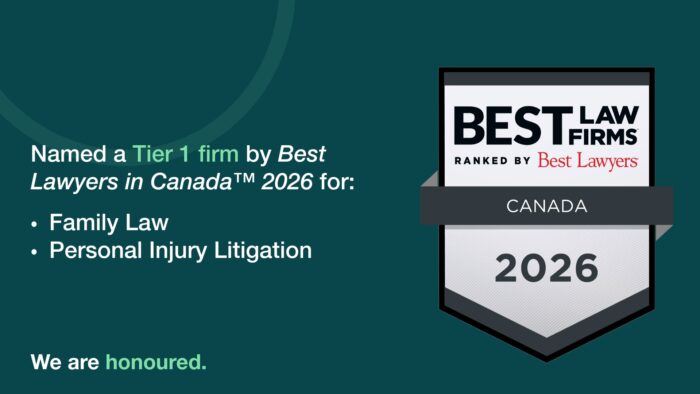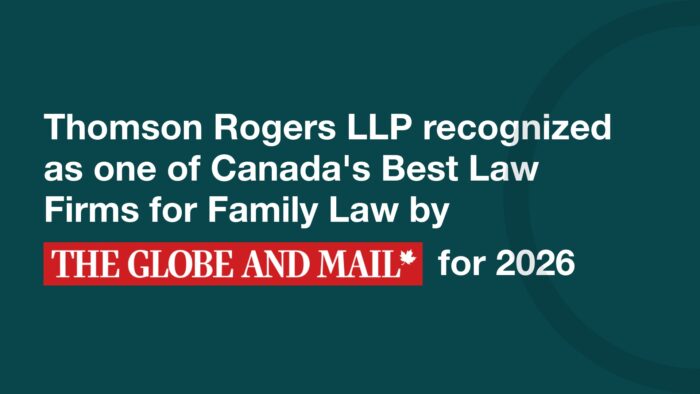New rules on experts create headaches
Author(s): Darcy R. Merkur
July 26, 2010
New rules governing the use of expert witnesses in the civil justice system have increased costs and caused confusion, according to lawyers who retain them.
A series of reforms designed to make experts more accountable while reducing costs and delay associated with their evidence came into force on Jan. 1.
One of the most notable changes saw expert witnesses forced to sign an acknowledgment, Form 53, confirming their duty to the court above and beyond the party that retained them.
But it’s the new timetable for production of reports that has caused lawyers the biggest headaches, according to Darcy Merkur, a partner at Thomson Rogers. Under the old rules, expert witness reports were exchanged 90 days before trial. Now parties must distribute them 90 days before the pretrial conference.
Merkur says he now has to prepare expert reports for smaller, less contentious issues that used to get put off until closer to the trial date and may never have been necessary if the case eventually settles.
“You didn’t want to spend $5,000 to get these nitpicky things finalized when the trial wasn’t for another year,” he says. “It’s forcing us to spend more money before the pretrials.”
Merkur notes he’s also had problems explaining the duties imposed by the new rules to experts. “Our instruction letters to the experts are so long now that they are incomprehensible.”
The rules demand detailed descriptions of the experts’ qualifications, research history, and factual assumptions on which they base their findings, all of which means they’re spending more time on reports.
“That may be a good thing because it’s usually more comprehensive, better written, and more thorough,” Merkur says. “But at the same time, it’s more expensive.”
In personal injury cases, a recent court ruling on non-compliant expert reports left lawyers fearing some of their most important witnesses may not be allowed to testify because they weren’t retained by either side in an action, according to Stephen Abraham, a personal injury and insurance litigator from Burlington, Ont.
In an April decision in Beasley v. Barrand by Superior Court Justice Patrick Moore, the judge refused to allow an expert to give his opinion based on a report produced for an accident benefits insurer who wasn’t party to the action.
As a result, Abraham says useful witnesses, such as a police officer who reconstructed an accident scene, may not be able to take the stand because they were never retained, as required by Form 53, by either party.
“You get this quirky situation where some of the most unbiased experts run the risk of not being able to testify because they haven’t filled in a piece of paper. Now we’re in a real state of flux because you’ve got to go to court and pray the judge will let that evidence in. That’s a very unsettling feeling for lawyers.”
Dr. Harold Becker, founder of medical evaluation firm Omega Medical Associates, says he has found lawyers slow to approach him with instructions as they come to terms with the new rules.
Nevertheless, he sees the reforms as a small step in the right direction. “It’s a terrific idea, but I don’t think it’s gone far enough,” he says. “But at least it’s not static. There is an acknowledgment there is something broken.”
Becker would like to see a move towards joint experts appointed by the court, rather than by lawyers, because he feels the medical profession struggles in an adversarial system. “Very few physicians are demonstrating opinion based on evidence,” he says.
“I see too many advocates for a cause, whether it be for their own cause or if it’s because they feel they have an obligation to the company they are hired by.”
The new rules stem from recommendations from Justice Coulter Osborne’s Civil Justice Reform Project, which heard complaints about the increasing professionalism of expert witnesses at the expense of practising specialists.
But Andrew Murray, a partner with Lerners LLP in London, Ont., says the new rules may have actually reinforced that trend. “One of the ideas was to get away from hired guns and professional experts.
Ironically, some of these changes have made it less enticing for the average person who could have an excellent expert opinion because it’s more cumbersome administratively.”
Despite creating templates to help treating doctors through the process of making a compliance report, Murray says there are many who can’t be convinced. “They say they’re busy actually treating people and they don’t want to perform this dance.”
Andrew Neuman of A. Neuman Associates Inc., a litigation support service specializing in forensic accounting, welcomes any attempt to streamline the system but says there have been negative side effects. For example, the new rules prevent experts from performing a consultancy role for lawyers because it could be considered advocacy.
“What it means, particularly in larger cases, is you’re going to have to retain a consultant in addition to your expert,” Neuman says. “It doesn’t quite double the cost but it does significantly increase them.”
Neuman notes most experts already considered themselves officers of the court before they had to sign a declaration confirming it but he sees Form 53 as a useful extra layer of accountability for them.
“When the court gives you a slap on the wrist, your livelihood will be going on a bit of a sabbatical. It can take years to build back up from something like that. I’ve seen an expert boutique go from 15 to 20 people down to about four after a critical decision from a judge.
That will not happen when it’s just the professional body doing it.”
Share this




